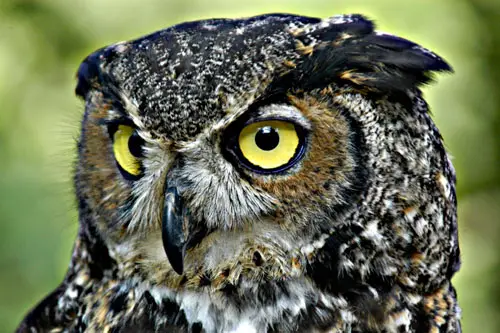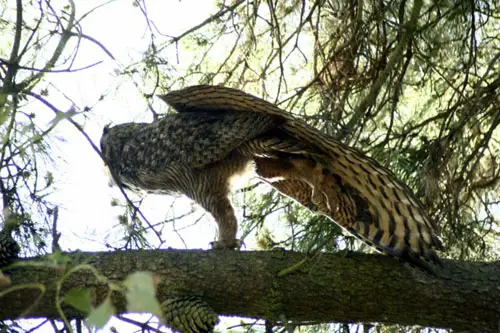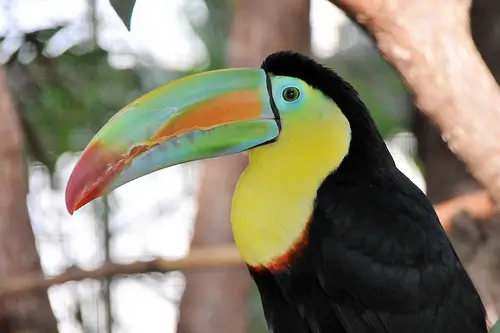Great Horned Owl
The Great Horned owl is a huge specimen ranging in length from 18 to 30 inches, and has an average wingspan of between 40 to 60 inches, though the average wingspan is just around 30 inches. They weigh in at around3 to 4 pounds, and the females are usually larger than the males.
Mature owls have very large tufts on the ears and a reddish brown to a grey face, fading to a white patch in the area of the chin or throat. These tufts are not actually true ears, they are simply a tuft of feathers.

Great Horned Owl
Eyes are usually yellow. The underside of the owl is buff colored with slight stripes, and the upper body is brown with darker colored splotches. The feet and legs are generally covered in feathers right up to the talons.
An interesting note is that while the species has the same general color, individuals from region to region may have subtle variations. As an example, owls from a sub-Arctic region may have a very light buff color, and birds from regions such as Central America could be a dark chocolate color.
This is a wonderful example of evolution, the animals that blend in well with their surroundings tend to survive and lend their genes to the next generation.
Owls have incredible eyesight, but they can’t move their eyes like humans do from side to side, so they have the ability to turn their neck an amazing 270 degrees so that they can see in other directions without moving the entire body and alerting their prey.
Owls also have stereo hearing that is as good, if not better than their eyesight. They are able through hearing alone to determine the exact location of their prey.

Great Horned Owl
These birds hunt by night, and are ambush hunters. They will wait on a perch high in a tree until they locate the prey and then swoop down on silent wings.
Usually they prey on small or medium sized rodents, such as shrews, rabbits, voles mice and squirrels along with bats, an occasional housecat, or small raccoons, but as any poultry farmer will tell you, they also have developed a taste for any duck or chicken unlucky enough to be caught outside after dark.
The breeding season which is in late January or early February, make the Great horned Owl one of the earliest breeding birds in the Americas. Normally mating season begins in late fall and the choose a mate by December.
Normally 2 eggs are laid per clutch with a rare instance of up to five. The eggs are about 2 inches wide and 2 ½ inches long. The incubation period will range from 29 to 38 days, but usually averages around 33. The period of brooding, which is continuous, will last until around 2 weeks of age.
After this it decreases a bit and at close to six weeks the young owls will begin to move onto nearby branches. A week later they may begin to fly, but many chicks do not totally seperate from the parent until the female is ready to reproduce again.
Find out more about the Great Horned Owl over at Wikipedia »



This site is great but you need to have more choices!!!love me and terri
its ok N what does “love me and terri” have 2 do with it
ok